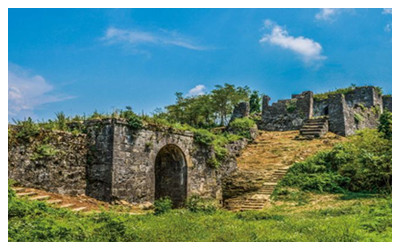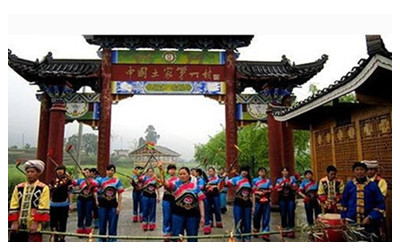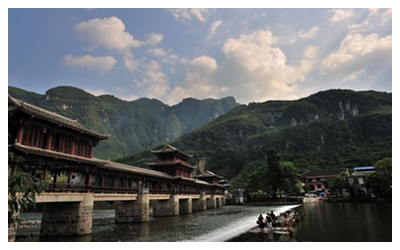Skype: neodalle-travel
Tel: +86 135 7447 2266
E-mail: sales@zhangjiajieholiday.com

Tujia ethnic group have long history in China and live mostly in Yanhe, Yinjiang, Sinan, Jiangkou and Dejiang counties in Northeastern Guizhou province.They engage mainly in farming. They beat gongs and drums and sing songs as they work. The Tujia people also like to hunt in the mountains.The Tujia diet consists of cereal and rice and is supplemented with sweet potatoes and potatoes. Their dishes are mostly sour and spicy in flavor. Their specialty foods include glutinous rice cake, preserved meat and oil tea. They like to drink wines which are produced with glutinous rice and sorghum.
Tujia Villages in Guizhou
 |
 |
 |
| Hailongtun Tusi Fortress Site | Yunshe Tujia Village | Yunshe Tujia Village |
Tujia houses include thatched cottages, brick houses, wooden houses and stilted buildings. They often live in slate houses and grottos as well, and their houses are built in clusters according to their clan.
The Tujia are well-known for their hand dance with over 70 ritual gestures to indicate war, hunting, farming and feasting. The dance is popular during the Spring Festival, or Lunar New Year, when several thousand people participate. Tujia epics tell of the origins of mankind and of the migrations and aspirations of the Tujia in dramatic and poetic ways. Tujia folksongs are usually about love and work or battles and grief. Virtually all Tujia can compose and sing songs.
Tujia traditional crafts include dyeing, weaving, embroidery, carving, painting and paper-cutting. Tujia women are skilled at weaving cloth, known as Tu Embroidery or Tu cloth. As one of the three most famous Brocades in China, Tu embroidery is exquisite and colorfully woven, with vivid patterns of landscapes, animals, flowers and Chinese characters.
 Ask Questions ?
Ask Questions ?